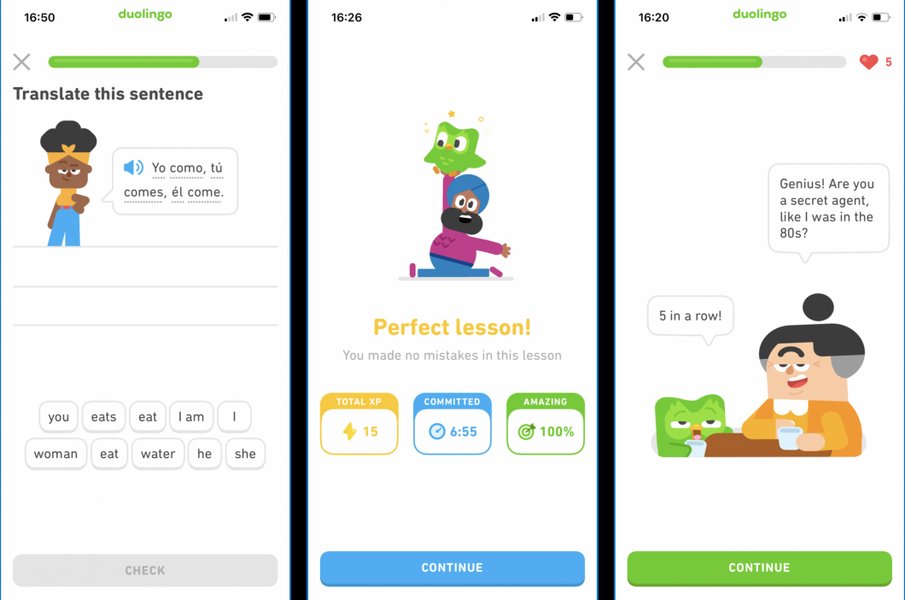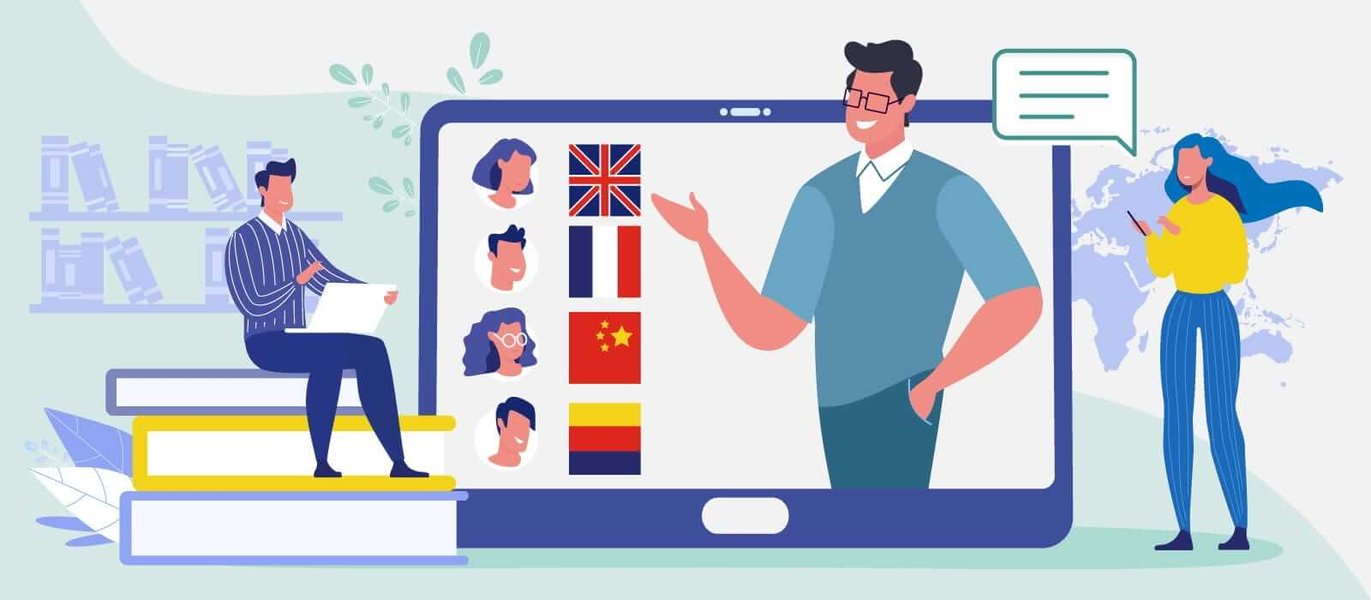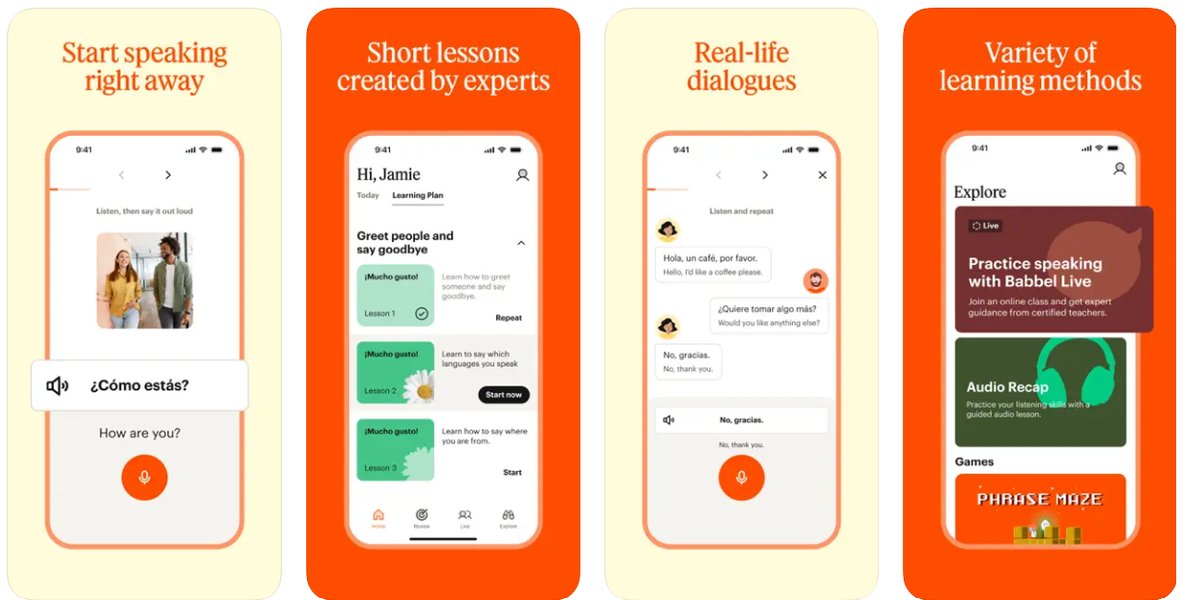
Unlock a New Language: Discover the Top Learning Apps of 2025!
Navigate the world of language apps and find the perfect fit for your learning style and goals with our comprehensive guide.
Highlights: Your Quick Guide to Choosing
- Find Your Match: The "best" app depends heavily on your learning preferences (gamified, structured, immersive), target language, and specific goals (conversation, vocabulary, grammar).
- Top Contenders: Apps like Duolingo, Babbel, Rosetta Stone, Pimsleur, and Mondly consistently receive high praise for their unique strengths and effectiveness in different areas of language acquisition.
- Beyond Apps: While incredibly useful, remember that apps are most effective when combined with real-world practice, such as speaking with native speakers, to achieve fluency.
The journey to learning a new language has been revolutionized by technology, with a plethora of apps promising fluency at your fingertips. As of May 2025, these digital tools have become incredibly sophisticated, incorporating AI, gamification, and diverse teaching methodologies. This guide synthesizes expert reviews and user feedback to present the leading language learning apps, helping you choose the one that best aligns with your aspirations.
In-Depth Reviews: The Best Language Learning Apps Explored
Let's dive into the features, strengths, and considerations for some of the most acclaimed language learning apps available today.
Duolingo: The Gamified Gateway to Languages

The Duolingo interface, known for its engaging and game-like lessons.
Duolingo is widely recognized, especially for beginners and those who enjoy a gamified learning experience. It turns language acquisition into a fun, almost addictive process with its bite-sized lessons and motivational features.
Key Features:
- Extensive Language Selection: Offers courses in over 40 languages.
- Gamification: Uses points, streaks, leaderboards, and achievements to keep users motivated.
- Varied Exercises: Covers reading, writing, listening, and speaking through interactive games, stories (Duolingo Stories), and audio lessons (DuoRadio).
- AI-Powered Learning: Duolingo Max (a premium tier) leverages generative AI for personalized feedback and role-playing conversations.
Strengths:
Its free version is remarkably comprehensive, making language learning accessible to everyone. The app's design is intuitive and engaging, particularly effective for building foundational vocabulary and grammar.
Potential Drawbacks:
While excellent for starting, it might not be sufficient for advanced learners or for developing deep conversational fluency without supplementary practice. Some find the repetition can become tedious for higher levels.
Pricing:
Free with ads. Duolingo Super (ad-free, unlimited hearts) is around $13/month or $84/year. Duolingo Max (includes AI features) is approximately $30/month, available in select courses.
Best For:
Beginners, casual learners, those motivated by games and streaks, and individuals looking to dabble in multiple languages.
Babbel: Structured Learning for Practical Conversation
Babbel adopts a more traditional, curriculum-based approach. Its lessons are crafted by language experts and are designed to get you speaking practical, real-world conversations quickly.
Key Features:
- Conversation-Focused: Lessons (10-15 minutes) emphasize dialogues you'd encounter in everyday situations.
- Grammar Integration: Explains grammatical concepts clearly as they relate to the conversational context.
- Speech Recognition: Helps practice pronunciation.
- Live Classes: Babbel Live offers online group lessons with certified teachers for an additional fee.
Strengths:
Babbel excels at building practical communication skills. Lessons are tailored based on your native language, making explanations more intuitive. The focus on real-life scenarios builds confidence for actual use.
Potential Drawbacks:
It's a subscription-based service, and the basic plan typically covers only one language. Some users might find it less "fun" than Duolingo if they prefer gamification.
Pricing:
Subscription starts around $10-18/month, with discounts for longer commitments and occasional lifetime access deals.
Best For:
Learners from beginner to upper-intermediate levels who prefer a structured, classroom-like experience and aim to develop practical conversational skills for travel or work.
Rosetta Stone: Immersive Learning from Scratch
A long-standing name in language learning, Rosetta Stone is known for its immersive "Dynamic Immersion®" method, which teaches language through context, images, and repetition, avoiding direct translation to your native tongue.
Key Features:
- Immersive Method: Encourages thinking in the target language from day one.
- TruAccent™ Speech Recognition: Provides feedback on pronunciation.
- Structured Lessons: Core lessons are comprehensive, often taking around 30 minutes.
- Offline Access: Downloadable lessons for learning on the go.
Strengths:
Excellent for beginners, helping to build a strong intuitive understanding of the language. The method mimics natural language acquisition.
Potential Drawbacks:
The immersive approach can sometimes feel slow or repetitive, and the lack of explicit grammar explanations might not suit all learners. It's also one of the pricier options.
Pricing:
Subscriptions range from approximately $15-$30/month, depending on the duration and number of languages.
Best For:
Absolute beginners who prefer an immersive, intuitive approach and are committed to dedicated study sessions.
Pimsleur: Mastering Pronunciation and Auditory Skills
Pimsleur is highly regarded for its audio-based method, focusing on developing conversational skills and authentic pronunciation through listening and repetition.
Key Features:
- Audio-Centric: Core lessons are 30 minutes of audio, designed for daily practice.
- Spaced Repetition System (SRS): Introduces and revisits vocabulary and phrases at optimal intervals.
- Focus on Speaking: Prompts users to speak aloud frequently.
- Wide Language Selection: Offers courses in over 50 languages.
Strengths:
Extremely effective for improving listening comprehension and pronunciation. It gets users comfortable speaking relatively quickly by focusing on core conversational patterns.
Potential Drawbacks:
Primarily audio-based, so it might not appeal to visual learners or those who want extensive reading/writing practice. Grammar is taught implicitly, which some may find insufficient.
Pricing:
Around $20-25/month for a subscription that typically includes one language.
Best For:
Auditory learners, individuals prioritizing speaking and pronunciation, and those who want to learn while commuting or doing other activities.
Mondly: Innovative Learning with AI and AR
Mondly has gained recognition for its intuitive design, broad language selection (41 languages), and incorporation of modern technologies like AI chatbots and Augmented Reality (AR) features.

Mondly leverages technologies like Augmented Reality to create immersive learning experiences.
Key Features:
- Interactive Lessons: Engaging exercises focusing on real-world conversation skills.
- AI Chatbot: Practice conversations with an AI tutor.
- AR Elements: (MondlyAR) projects virtual elements into your environment for immersive vocabulary learning.
- Speech Recognition: Native speaker audio and feedback on pronunciation.
- Gamified Experience: Daily lessons, challenges, and progress tracking.
Strengths:
Offers a fresh, technologically advanced approach to language learning. The broad language selection is a plus, and its focus on practical conversation is beneficial.
Potential Drawbacks:
Some users report that AI features can occasionally be buggy. While innovative, the core teaching might not be as deep as some more established, focused apps for advanced grammar.
Pricing:
Offers a free daily lesson. Premium access is around $10/month or $48/year.
Best For:
Tech-savvy learners, those interested in trying AR and AI in language learning, and users looking for a wide variety of languages in a gamified format.
Memrise: Vocabulary Building with Real-World Context
Memrise stands out for its engaging approach to vocabulary acquisition, using spaced repetition, mnemonics, and short videos of native speakers.
Key Features:
- Spaced Repetition: Efficiently memorizes new words and phrases.
- "Learn with Locals": Short video clips of native speakers using words in real contexts.
- User-Generated Content: A vast library of courses created by the community, alongside official Memrise courses.
- Gamified Learning: Short, focused sessions that feel like games.
Strengths:
Excellent for visual learners and for building a strong vocabulary base quickly and enjoyably. The real-world video clips make learning feel more authentic and less robotic.
Potential Drawbacks:
May not provide as comprehensive grammar instruction as other apps. Often best used as a supplement for vocabulary building alongside a more structured course.
Pricing:
Free version with core features. Premium subscription (ad-free, offline access, more features) is around $9/month or $60/year.
Best For:
Visual learners, those focused on expanding vocabulary, and users who enjoy short, engaging learning sessions with real-world examples.
Other Notable Mentions
Beyond these highlighted apps, several others offer unique benefits:
- Lingoda: Best for live online classes in small groups or private sessions with native-speaking teachers, offering a structured, school-like experience.
- Fluenz: Emphasizes an instructional learning approach with detailed explanations, particularly well-suited for adult learners who want to understand the 'why' behind language rules.
- Preply / italki: Platforms that connect learners with tutors for personalized one-on-one lessons, ideal for focused speaking practice and tailored learning plans.
- Busuu: Provides structured courses with opportunities to get feedback on written and spoken exercises from native speakers within its community.
- Sign It ASL: Specifically recommended and highly rated for learning American Sign Language comprehensively.
- Anki / Glossika: Powerful tools for vocabulary building through flashcards (Anki) and audio-based sentence repetition (Glossika).
- HelloTalk / Tandem: Language exchange apps that connect you with native speakers for mutual learning through text, voice, and video chat.
Visual Comparison: Language App Feature Focus
To help you visualize how different apps cater to various learning aspects, the radar chart below compares five popular apps based on key features. The scores (from 1 to 10, with 10 being the highest) reflect their general strengths in each category. A higher score indicates a stronger emphasis or effectiveness in that particular area.
This chart illustrates that Duolingo and Mondly score high on gamification, while Pimsleur and Babbel lead in conversational focus. Babbel offers strong grammar depth, and Duolingo and Memrise (not charted but similar to Duolingo in vocab strength) are great for vocabulary. Pimsleur excels in pronunciation, and Babbel (with Live classes) offers better live interaction opportunities compared to the others shown here directly within the app structure.
Choosing Your Path: A Mindmap Guide
The best language learning app for you depends on your individual learning style and specific goals. This mindmap outlines common learning preferences and objectives, connecting them to apps that cater well to those needs. Use it to help narrow down your choices based on what you want to achieve and how you learn best.
This mindmap illustrates how different apps align with various learning preferences and objectives. For example, if you prefer a gamified approach, Duolingo or Mondly might be suitable. If your goal is to improve conversational skills, Babbel or Pimsleur, supplemented by practice apps like HelloTalk, could be effective.
Comparative Overview: Key App Features at a Glance
The table below offers a summarized comparison of some of the top language learning apps, highlighting their primary target audience, distinctive features, language availability, and general pricing models. This can serve as a quick reference to see how they stack up against each other.
| App Name | Best For | Key Features | Languages Available | Typical Pricing Model |
|---|---|---|---|---|
| Duolingo | Beginners, gamified learning, free access | Bite-sized lessons, streaks, progress tracking, AI feedback, reading/listening exercises (Stories, DuoRadio), community features. | 40+ | Free (with ads); Super/Max subscriptions ($13-$30/month) |
| Babbel | Structured, conversational skills, practical use | 10-15 min lessons, real-life dialogues, speech recognition, grammar tips, native speaker audio, live classes option. | 14 | Subscription ($10-$18/month, lifetime options) |
| Rosetta Stone | Immersive learning for beginners, no translation | Contextual learning with images/phrases, TruAccent™ speech recognition, offline mode, structured core lessons (30 min). | 25+ | Subscription ($15-$30/month) |
| Pimsleur | Auditory learners, pronunciation, speaking | 30-min audio lessons, spaced repetition, focus on conversational phrases, listen-and-repeat methodology. | 50+ | Subscription (~$20-25/month) |
| Mondly | Tech-savvy users, broad language choice, AI features | Interactive lessons, AI chatbot for conversation, AR features, speech recognition, daily challenges, gamified experience. | 41 | Free tier; Premium (~$10/month) |
| Memrise | Vocabulary building, visual learners, real-world context | Flashcards, spaced repetition, short videos of native speakers ("Learn with Locals"), user-generated content, gamified short sessions. | Wide range (official & community courses) | Free tier; Premium (~$9/month) |
This table provides a snapshot to quickly compare the core offerings of these popular language learning platforms. Consider your primary needs when reviewing their strengths.
Video Insight: Expert App Recommendations
For a dynamic perspective on choosing language learning apps, the following video offers insights and reviews from Multilingual Mastery, discussing how to select the best app based on your needs. It covers some of the top contenders and provides practical advice for language learners.
This video, "Top 5 Language Apps | How to choose the best app to learn a ...", delves into apps like Rosetta Stone, Babbel, and others, providing a helpful overview of their teaching methodologies and who might benefit most from each. Watching reviews like this can offer additional nuances to help inform your decision.
How to Choose the Right App for You

Choosing the right app involves matching its features to your personal learning style and goals.
Selecting the ideal language learning app is a personal decision. Consider these factors:
- Your Learning Style: Do you prefer games (Duolingo, Mondly), structured lessons (Babbel), immersive experiences (Rosetta Stone), or audio-based learning (Pimsleur)?
- Your Goals: Are you learning for travel (Babbel), basic understanding (Duolingo), in-depth fluency, or professional reasons? Some apps focus more on vocabulary (Memrise), while others prioritize conversation (Pimsleur, Babbel).
- Time Commitment: How much time can you dedicate daily? Apps offer varying lesson lengths, from Duolingo's 5-minute sessions to Pimsleur's 30-minute audio lessons.
- Budget: Many apps offer free versions or trials (Duolingo, Memrise, Mondly). Others are subscription-based (Babbel, Rosetta Stone, Pimsleur).
- Target Language: Ensure the app offers robust support for the language you wish to learn. Some apps have more extensive offerings for popular languages.
Most importantly, many apps offer free trials. Take advantage of these to test a few options before committing. Remember, consistency is key, and the "best" app is the one you'll use regularly and enjoy.
Frequently Asked Questions (FAQ)
Recommended Further Exploration
To deepen your understanding and enhance your language learning journey, consider exploring these related topics:
- How can I effectively combine language apps with other learning methods?
- What are the best techniques for practicing speaking skills when learning a new language?
- Which language learning apps offer specialized courses for specific professions?
- How does AI technology enhance the language learning experience in modern apps?
References
Last updated May 8, 2025